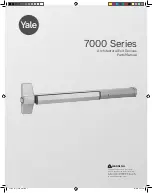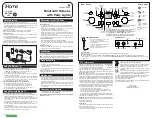
31
VIPER MULTI 165
OPERATING MANUAL
11.7 Travel Speed
Travel speed is the rate that the gun is moved along the weld joint and is usually measured in mm per minute. Travel
speeds can vary depending on conditions and the welder's skill and is limited to the welder's ability to control the weld
pool. Push technique allows faster travel speeds than Drag technique. The gas flow must also correspond with the travel
speed, increasing with faster travel speed and decreasing at a slower speed. Travel speed needs to match the amperage
and will decrease as the material thickness and amperage increase.
11.7.1 Travel Speed Too Fast
A too fast travel speed produces too little heat per mm
of travel, resulting in less penetration and reduced weld
fusion, the weld bead solidifies very quickly trapping gases
inside the weld metal causing porosity. Undercutting of the
base metal can also occur, and an unfilled groove in the
base metal is created when the travel speed is too fast to
allow molten metal to flow into the weld crater created by
the arc heat.
11.7.2 Travel Speed Too Slow
A too slow travel speed produces a large weld with a
lack of penetration and fusion. The energy from the arc
dwells on top of the weld pool rather than penetrating the
base metal. This produces a wider weld bead with more
deposited weld metal per mm than is required resulting in
a weld deposit of poor quality.
11.7.3 Correct Travel Speed
The correct travel speed keeps the arc at the leading edge
of the weld pool allowing the base metal to melt sufficiently
to create good penetration, fusion and wetting out of the
weld pool producing a weld deposit of good quality.
Travel Speed Too Fast
High, narrow bead
Undercut
Lack of fusion
Porosity
Spatter
Lack of joint penetration
Lack of joint penetration
Lack of fusion
Porosity
Cold lap
Large, wide bead
Travel Speed Too Slow
Correct Travel Speed
Good penetration
Good toe fusion
Even Shaped Bead
Good sidewall fusion
















































